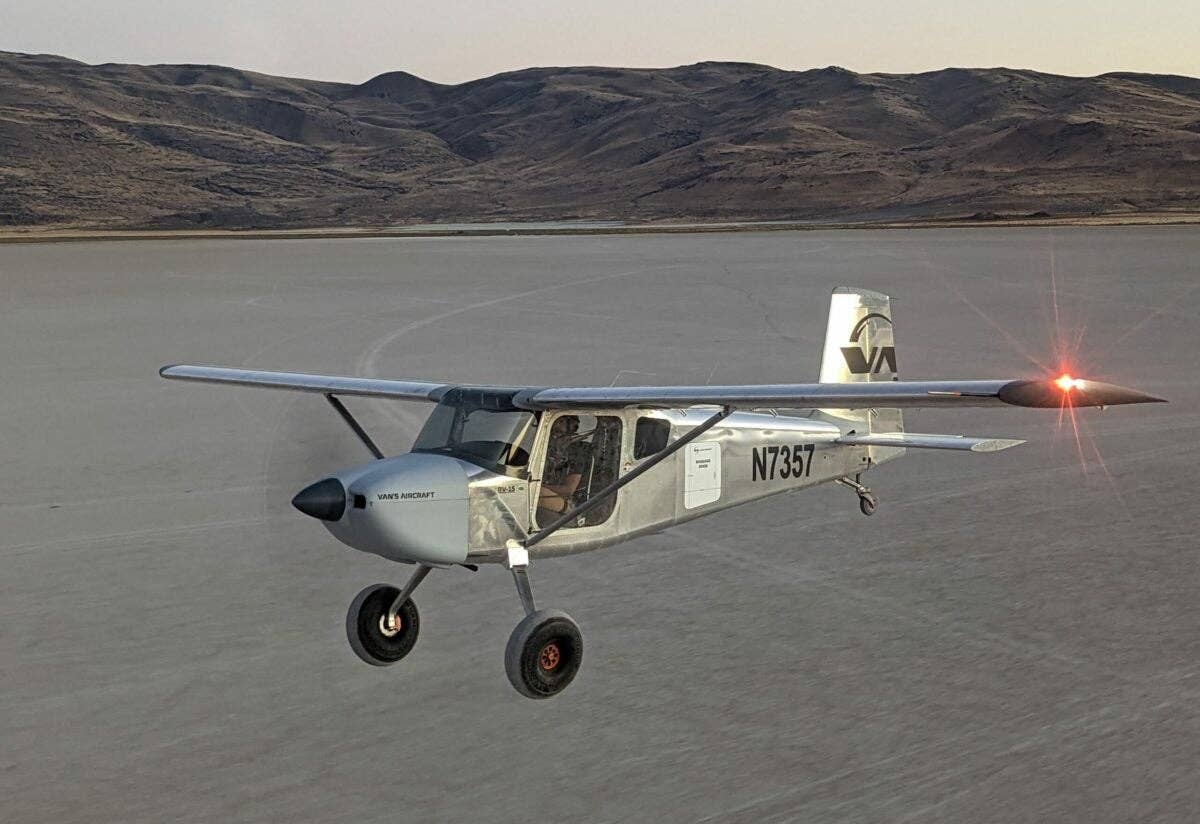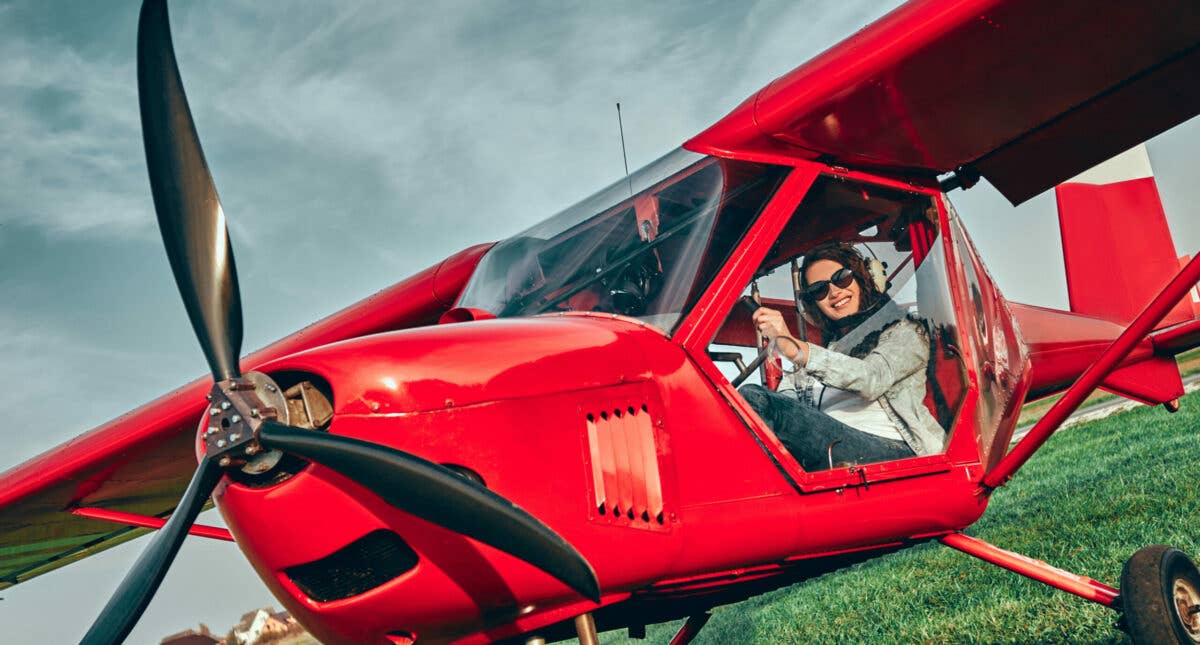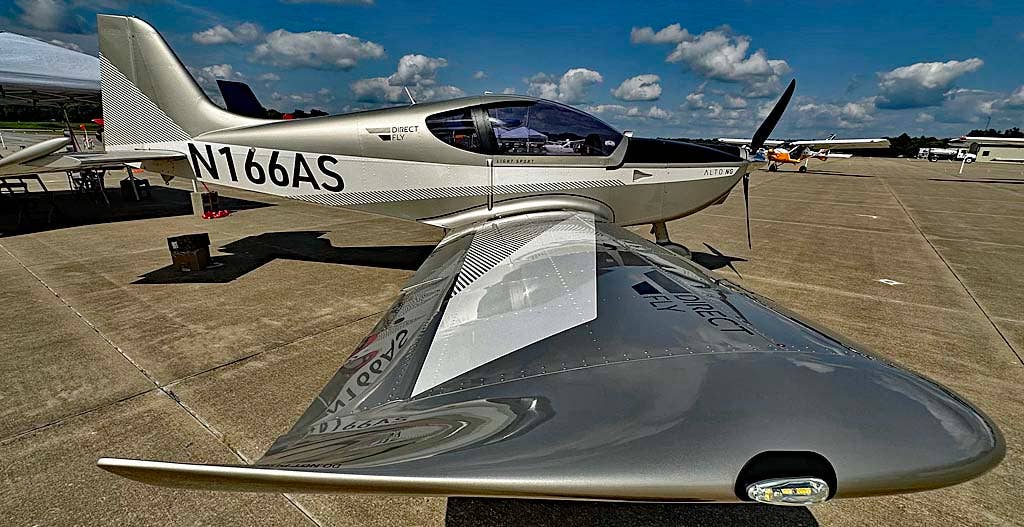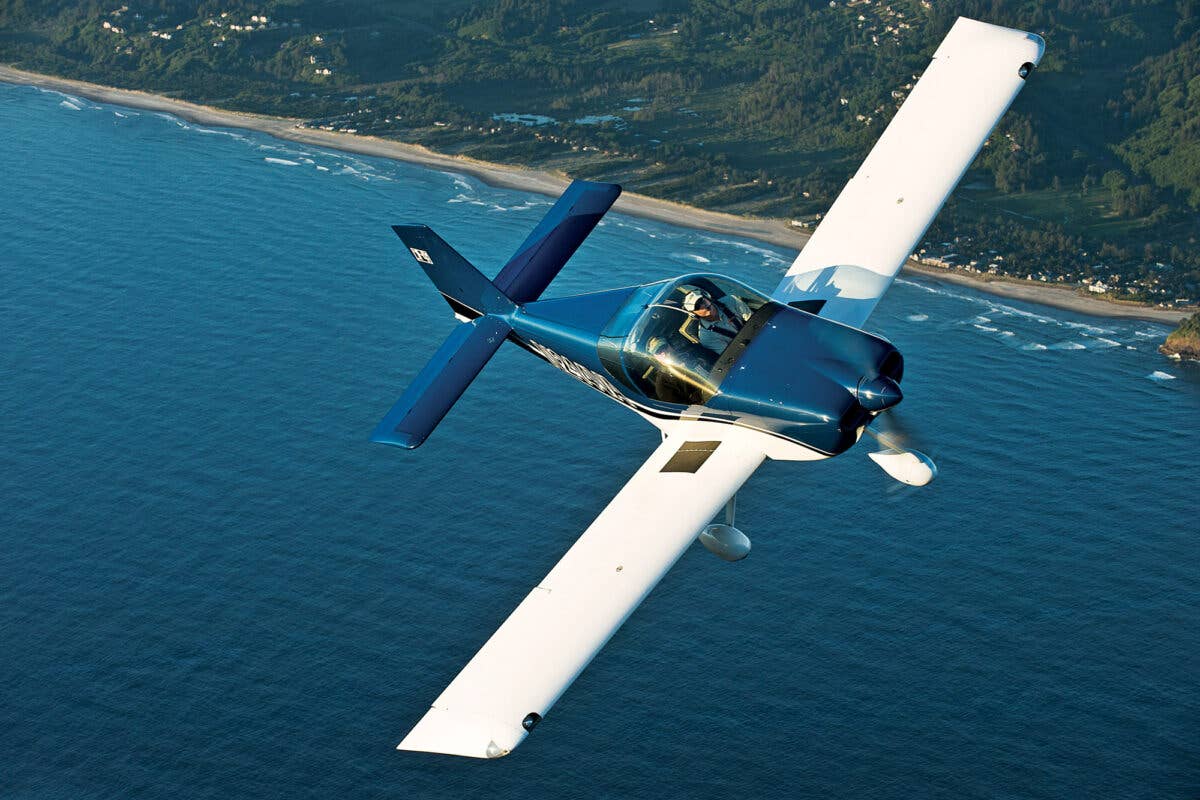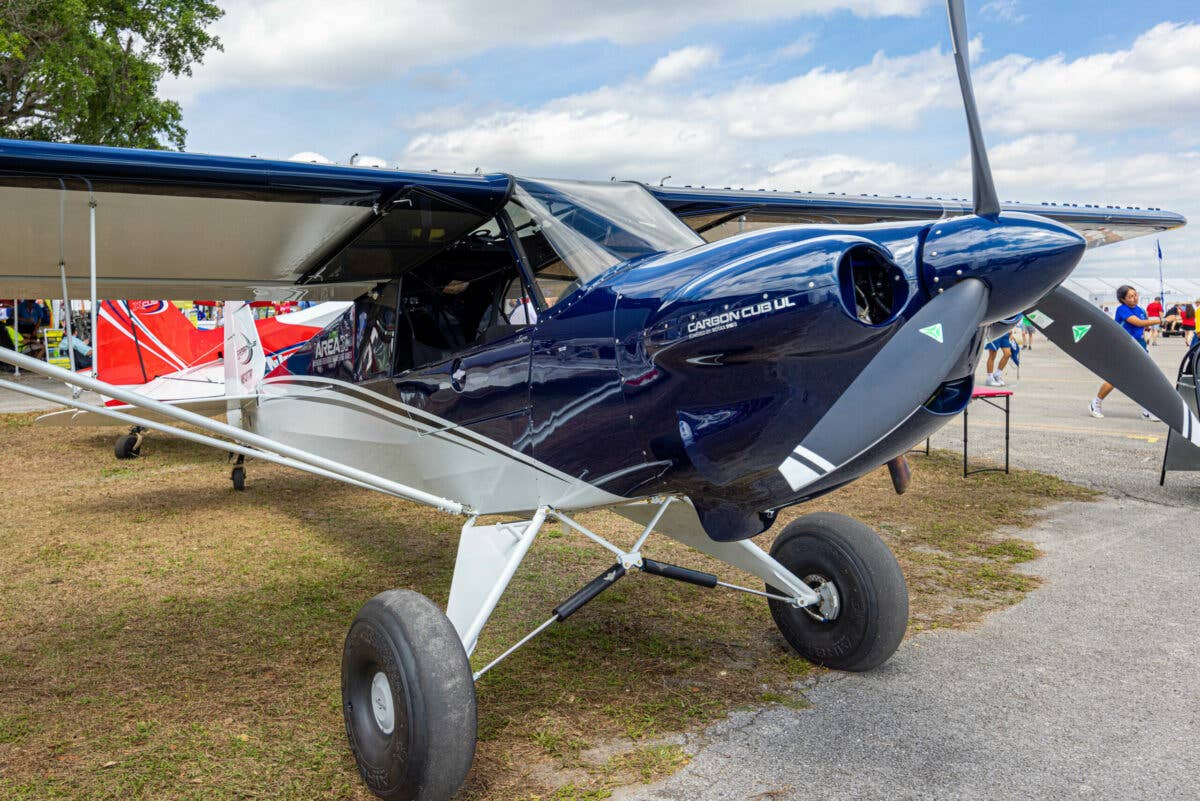Piper J-3 Cub’s Heritage of Simplicity, Reliability
An enchanting legacy that you can fly.
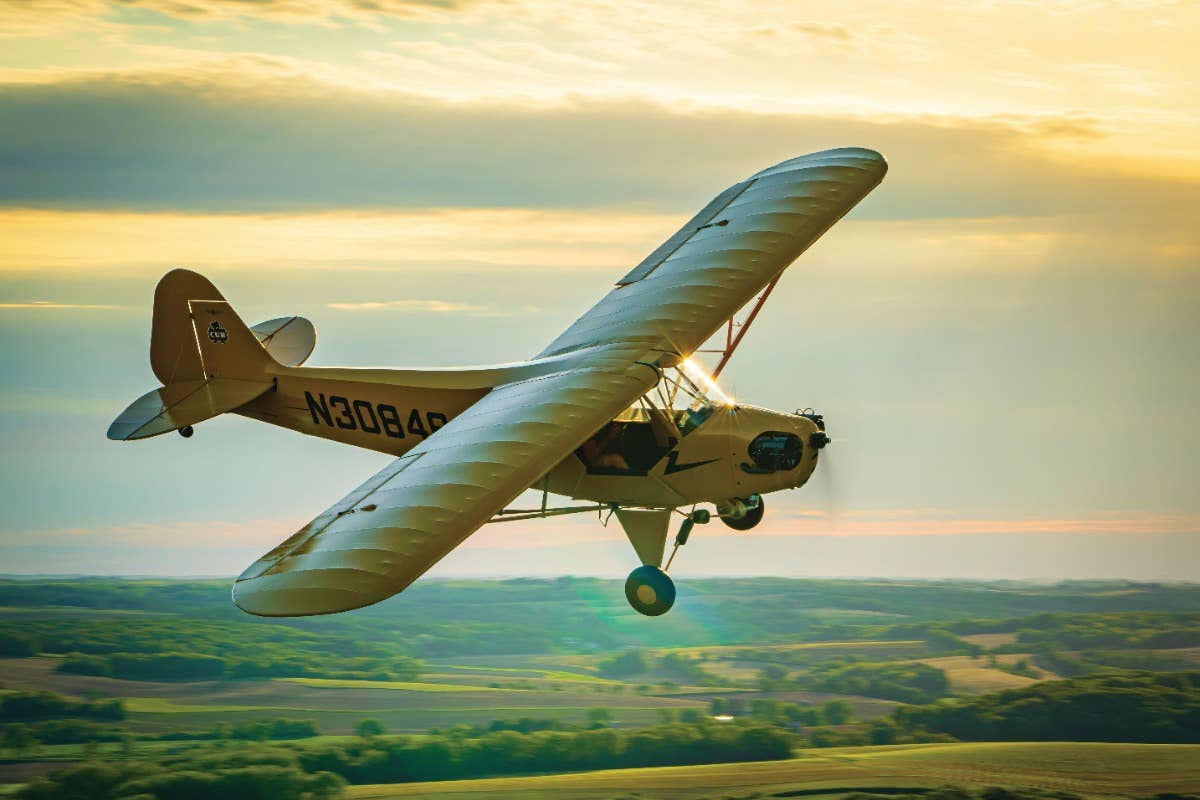
The J-3’s design can be traced back to the Taylor E-2 from the early 1930s. [Courtesy: Jim Stevenson]
The Caterham Seven. The Ford 8N. The BMW R69. Some of history’s most iconic machines embraced mechanical simplicity, and achieved continued success by sticking to the original plan. By resisting the urge to add features and increase complexity, manufacturers discovered that sometimes less is more.
Such was the case with the Piper J-3 Cub. Devoid of an electrical system, flaps, radios, and just about anything that can be considered a creature comfort, it provided only the bare minimum necessary to function as an airplane. Fortunately, such simplicity translates to light weight and increased reliability, so when Piper presented the Cub as an ideal trainer, the formula worked very well.
As is often the case, the question of how well the Cub’s recipe of pared-down simplicity serves the needs of a new first-time buyer depends entirely on the individual’s preferences and future plans. For someone interested in longer-distance travel or load-carrying capability, it comes up short. But for someone interested in fair-weather adventuring to nearby pancake breakfasts and exploring grass strips, it just might be the perfect machine.
Here, we take a closer look at the iconic J-3 Cub and explore what it’s like to own, fly, and maintain.
Design
The J-3’s design can be traced back to the Taylor E-2 from the early 1930s. The original E-2 looked similar to the J-3, but was equipped with a 37 hp Continental A40 engine and a non-steerable tailskid—and it had no brakes.
When the Taylor Aircraft Company filed for bankruptcy in the late 1930s, William T. Piper purchased it and utilized the E-2 as the basis for the Piper J-3. The Piper design introduced more powerful engines with the 65 hp Continental becoming the most popular. Brakes and steerable tailwheels were added, and the company offered a floatplane version.
The resulting design has proven durable, and the Cub remains one of the most imitated in GA.
Model History
Although the J-3 could be considered a success in the late 1930s and into the 1940s with nearly 2,000 sold in both 1940 and 1941, much of the J-3’s success can be attributed to fortunate timing. With the attack on Pearl Harbor in December 1941 and the U.S.’ subsequent entry into World War II, the military suddenly required a large number of light aircraft for reconnaissance, observation, and liaison duties.
Piper came through, producing several thousand examples of the L-4 Grasshopper, which was essentially a J-3 Cub with additional windows and different paint. While the sale of so many L-4s was a boon to Piper, the subsequent boom of postwar sales was even more so. At a price of $2,195 (the equivalent of just under $30,000 today), the J-3 was both affordable and appealing to soldiers returning from the war. Accordingly, Piper sold around 7,000 J-3s in 1946 alone. Ultimately, nearly 20,000 were produced between 1938 and1947, and 3,796 Piper J-3s remain active on the FAA aircraft registry today.
Market Snapshot
The market value of the Piper Cub reflects more than the sum of its parts. Compared to similar types like Taylorcrafts and Aeroncas, the Cub’s historical significance and cachet elevates its value substantially. For a buyer only interested in an airplane’s performance and utility, other types that aren’t as sought after will likely provide better value. But for a buyer that is enchanted by the Cub’s legacy, there is no substitute.
A recent analysis of 19 J-3s listed for sale revealed a median price of $43,900. The roughest examples were listed for around $30,000 while the finest, fully-restored examples topped out at $85,000. With comparable types starting out at $20,000 to $25,000, this reflects a premium of about 20 to 30 percent for the J-3. “The Cub Premium” aside, the variance in price within the type reflects the overall condition of the individual aircraft as well as the STCs and modifications in place. While a 100 percent original restoration offers value to traditionalists, more powerful engines and basic electric systems offer value to those interested in additional performance and usability.
Anecdotally, we’ve seen several examples that have been discounted by as much as $10,000 after sitting unsold for a month or two. This could be the result of some overly-optimistic initial prices, but it could also be a sign that the market is beginning to soften a bit.
Flight Characteristics
With a relatively snug cabin and a particularly tiny front seat, larger individuals may need to sacrifice some comfort to take up a Cub. In cold weather, the combination of a drafty cabin and lackluster heater can make these tight accommodations even more so as the occupants add layers of clothing. Snug-fitting, narrow-toed shoes are critical in a J-3. Bulkier footwear like boots can become caught on the cables and structural supports adjacent to the rudder pedals, and the lack of feel through thick soles can make it difficult to discern where the small heel brake pedals are located. Minimalist shoes with thin soles reward a J-3 pilot with deft freedom of movement and great feel.
Some thought is necessary for overnight trips, as well. The J-3’s baggage compartment, such as it is, provides little more space than a car’s glove box. Some owners leash bags into the front seat when flying solo, but extreme care must be taken to ensure the bag and all of its straps are perfectly secured lest something become jammed in the flight controls. The solo pilot must also ensure the altimeter is set before strapping in, as they will not be able to reach it with the belt fastened. Once settled in, the occupant of the rear seat will experience a near-total lack of forward visibility. Using S-turns on the ground and peripheral vision during takeoff and landing becomes necessary. This is all good practice, as the J-3 may only be flown solo from the back seat. One benefit to flying from the backseat is the additional feel it provides with regard to coordination. As the occupant is positioned farther away from the center of rotation, uncoordinated flight feels more pronounced and is thus more noticeable than it is from the front seat.
In airplanes that lack electrical systems, hand propping is necessary. Quality instruction from an experienced teacher pays off here, and the J-3’s relatively low engine compression enables just about anyone to do it safely and successfully. Some owners have in-stalled a starter and a battery without an alternator to ease starting while saving weight. When the battery becomes depleted after a few months of use, they simply plug it into a wall outlet to recharge it. Radios are another concern with versions that lack electrical systems. Most owners tend to install a handheld radio with an external antenna and an intercom to enable the use of headsets. These are typically battery powered, as are any iPads and any other handheld devices.
Most J-3s are able to get off the ground relatively quickly, but after becoming airborne, a 65 or 75 hp machine will provide its occupants with a rather ponderous climb rate. Hot days, high elevations, heavy passengers, and departure-end obstacles should all be carefully taken into account. In the air, the J-3 is all about fun. The upper and lower doors may be left open in flight, providing a panoramic view of the countryside below. The sparse instrument panel provides basic information without demanding attention. The open lower door also serves as a handy stall indicator—when the airplane reaches the brink of entering a stall, the lower door will flip up and flutter in the turbulent air.
In cruise, a 65 hp J-3 will sip fuel at a rate of about 4 gph while returning a cruise speed of about 70 mph. More powerful engines will burn an additional 1 to2 gph, but the added power tends to improve takeoff and climb performance more than cruise speed. A J-3 equipped with the Continental C90, for example, will leap off the runway but will only achieve about 75 mph while burning about 5.5 gph.
Flight controls are well-positioned and easy to reach. For those accustomed to flying a Luscombe or Grumman, roll control is downright lazy; the Cub feels like the aileron hinges have been overtightened and the cables replaced with rubber bands. The rudder and elevator are responsive, however, and after spending a bit of time learning the optimum blend of control inputs, the J-3 is simple and straightforward to fly. While the J-3 still runs you the risk of ground loops, it's considered to be forgiving. The landing gear is suspended by bungee cords, and though there's a difference between the results you get landing with fresh bungees versus aging ones, the system is quite robust and shrugs off even the firmest landings.
Ownership
On one hand, the Cub is one of the simplest certified airplanes available. But on the other hand, the airframe incorporates fabric-covered steel tubing and, depending on the model year, may also incorporate a wood wing spar. Like a violin or cello, the airplane demands care and attention, and a Cub that’s been neglected can become very expensive to bring back to life.
Owners report quotes of around $40,000 to have all of the fabric replaced on a J-3. While some of the expense goes toward addressing airframe issues that are discovered during the process, fabric replacement is lengthy and tedious. When evaluating a Cub, a wisebuyer takes the fabric’s age into account and maintains a fabric reserve to more easily absorb the cost.
For a 75-plus-year-old airplane produced in such numbers, the J-3 has few airworthiness directives (ADs). The most notable requires the periodic inspection of the wing struts and strut forks, but this AD can be eliminated by replacing those parts with modernized versions. Other ADs are either one-time or easily addressed.STCs, on the other hand, are plentiful. A wide variety of engine options exist, from the original 65 hp Continental to the 85 and 90 hp versions, as well as the 100 hp O-200. When shopping for a J-3, sticking with the J-3C version makes it easier to later switch to different engine models. It was originally equipped with a Continental engine, so an owner can install a C75, a C85, or a C90-8 with a logbook entry from their A&P. The process is far more tedious when attempting to install one of these engines on a J-3F originally equipped with a Franklin engine or a J-3L that originally came with a Lycoming.
Like any steel-tubed taildragger fuselage, a thorough pre-purchase inspection pays close attention to the lower fuselage longerons for rust or corrosion. It’s also smart to closely inspect the jackscrew that operates the elevator trim; if play is detected at the leading edge of the horizontal stabilizer, the jackscrew might require replacement. The fabric must be cut to access it.
Airframe parts are easily sourced from a number of companies, and unlike some types, the J-3’s airframe doesn’t require any parts that are particularly difficult to find. Owners report annual inspection costs of around $1,000 if no issues are found. Owners report relatively reasonable insurance premiums, as well. One 18-year-old with 150 hours of total time and only 20 hours of tailwheel time paid $1,380 for a year of coverage with a $30,000 hull value. An experienced ATP with significant tailwheel time paid about half that for the same hull value. The type club J3-Cub.com is highly regarded among owners as a place to ask and answer questions, and Clyde Smith at cubdoctor.com is considered by many to be the guru of fabric Pipers.
What a J-3 lacks in speed, capacity, and ergonomics, it makes up for in personality, simplicity, and fun. Like swinging a leg over a vintage Ducati or sliding into a Porsche 356 Speedster, the experience is sublimely raw and unrefined. The J-3 commands a premium over other types, but it holds a correspondingly higher resale value. Its simplicity makes it relatively inexpensive to own, fly, and maintain. The mix of legacy and economy is compelling, and rare's the J-3 owner that regrets their purchase.
PIPER J-3 CUB
| Price: $30,000 to $85,000 |
| Powerplant (original): Continental C65, 65 hp |
| Normal cruise speed: 70 mph |
| Endurance: 3 hours @ 4 gph |
| Baggage capacity: 20 lbs. |
| Takeoff distance: 370 ft. |
| Landing distance: 270 ft. |
| Insurance cost: Low |
| Annual inspection expense: Low, unless fabric work is required |
| Recurring ADs: Few |
| Parts availability: Good (from type clubs and owners) |
When FLYING reported on the Piper J-3 Cub in its October 1946 issue, the U.S. was just one year out of World War II, and pilots returning to the civilian world were converting to private pilot certificates—then licenses—in droves. FLYING noted the J-3's top speed 83 mph and range of more than 200 sm as benefits to the pilot seeking an easy trip into the sky. Thirty years later, in 1976, contributor John Olcott waxed nostalgic about the airplane: "Breathes there the pilot, with soul so dead, who never to himself hath said, 'I want a Cub that's Piper bred?'
"The low stalling speed and soft stall characteristics make the Super Cub an easy taildragger to land, although students seem to master landing sooner in the J-3 Cub," Olcott went on to write. "The CG of the J-3 required pilots to solo from the rear seat, which forced them to look out the side of the Cub at precisely the angle that was best for executing a proper landing."

Subscribe to Our Newsletter
Get the latest FLYING stories delivered directly to your inbox

